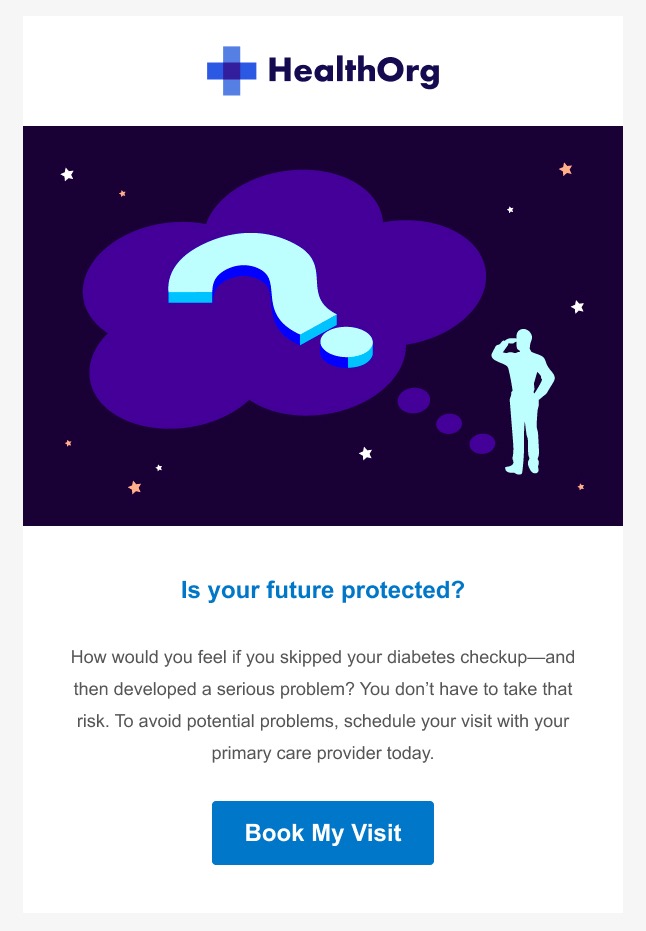It’s New Year’s Day, 2022, and you just woke up. You pour yourself a cup of coffee and settle into your favorite spot on the couch. As you gaze out the window, you feel a sense of calm and hope. There’s a brand-new year ahead of you.
As you think about what lies ahead, you picture yourself achieving goals. Maybe it’s finally taking that trip. Maybe it’s losing the weight for good. Maybe it’s meditating more and stressing less.
But suddenly—out of nowhere—fear creeps in. An avalanche of uncomfortable thoughts starts cascading in:
“What if I work too much and don’t end up taking that trip? I’ll be so mad at myself.”
“What if I don’t lose the weight? I’ll regret it. I can’t keep leaving my health on the backburner.”
“What if I can’t make time to meditate? I’ll feel like such a stressed-out mess.”
What you just experienced? It’s called anticipated regret.
In short, anticipated regret happens when you consider how your current behavior could cause an outcome you don’t want for your future. You experience what that regret could feel like right now—and it doesn’t feel good.
Traditional marketing and advertising campaigns often use anticipated regret as a communication strategy. It helps to convey a sense of discomfort, fear, or—you guessed it—regret.

“If you don’t buy this car, your current vehicle might not keep you safe much longer.”
“If you don’t use this skincare cream, you’ll end up with wrinkles.”
Anticipated regret can indeed be a powerful motivator. When you think about what you don’t want in the future—and the picture in your mind is unpleasant enough—it can influence the decisions you make right now.
While anticipated regret sometimes comes across as fearmongering, it can be done more artfully. In behavior change communications, we can apply the right dose of this strategy to prompt a person to action.
But does it work?
Yes. In fact, behavioral scientists have been using this behavior change technique for decades.
Anticipated regret has been operationalized to help promote a variety of health behaviors, from preventive cancer screenings and vaccinations to healthy eating, physical activity, and smoking cessation.1 Prompting a person to think about a future negative outcome that can occur if they don’t act is associated with both increased intentions to perform the desired behavior1,2 and a higher likelihood of actually performing the behavior.1
Interestingly, though, not all negatively framed messages are created equal. Researchers have tried to prompt behavior change by helping individuals assess their own risk for certain health outcomes. These behavior change techniques include tapping into the individual’s perceived likelihood or perceived severity of negative health outcomes, as well as leveraging worry or concern. However, research suggests anticipated regret is more strongly associated with intentions to act and acting than these other behavior change techniques.1
When used correctly, anticipated regret can be a powerful driver of behavior change.
How do we operationalize anticipated regret in content?
At Lirio, we sometimes use anticipated regret to help people overcome specific barriers to behavior change. Like all of our behavior change techniques, we operationalize anticipated regret in the content—both copy and visuals—we deliver to the end user.
Here’s a few examples of what an email or text message might look like if we use anticipated regret:
- Imagine missing an important message from your physician when you’re really counting on it. You wasted time worrying when those test results were all clear.
- How would you feel if you skipped your diabetes checkup—and then developed a serious problem?
- What happens when you have a health emergency, but you can’t find your provider’s contact info? You’re panicked and frazzled, which only makes the situation worse.
In each of the above examples, we help the reader imagine an undesirable outcome. But then what? On its own, this type of message seems negative and fear-inducing. When we leverage this strategy in content, therefore, we design messages that give the recipient a path to avoid anticipated regret. So, a full message might look like this:
How would you feel if you skipped your diabetes checkup—and then developed a serious problem? You don’t have to take that risk. To avoid potential problems, schedule your visit with your primary care provider today.
In this example, we introduce the anticipated regret, and then show the patient how to avoid it by completing a particular behavior.
We can strengthen the potency of the message by matching the above content with a visual that also depicts anticipated regret. Illustrations, photography, and even icons can have a powerful impact on how a person experiences the message—setting the tone, evoking feelings, and suggesting concepts or ideas the viewer processes visually.
In the following example, the visual illustrates a person looking into the unknown future and questioning what will happen. The color scheme of black and dark purple—as well as the representation of being in space—conveys a somber, pensive mood. This visual prompt encourages the patient to consider potential consequences of a skipped visit, without use of fear-based imagery.

No doom and gloom—just proof it works
One important thing to note: The goal of using anticipated regret is not to create doom and gloom or scare the recipient of the message. Rather, it’s to tap into a person’s own existing concerns and prompt them to imagine future outcomes they likely want to avoid.
While it’s important to be sensitive, inclusive, and respectful when it comes to patient communications, it’s also helpful to keep an open mind about what messaging strategies work. Certain individuals might respond extremely well to anticipated regret as a behavior change technique. The discomfort a patient experiences with this type of message is often the very reason why it motivates action.
In fact, some of our top-performing messages at Lirio use anticipated regret as the core behavioral strategy:
- When used to address the barrier of lack of time, anticipated regret improved user engagement with mental well-being and stress management resources offered through an Employee Assistance Program (EAP).
- Anticipated regret ranked as the top engagement strategy for subject lines in a COVID-19 vaccination email messaging solution.
- For preventive care in certain populations, anticipated regret was effective for prompting patients to schedule and attend a yearly mammogram.
Always learning, always individualizing
The key thing to remember? Every person is different. While anticipated regret may prompt behavior change in some individuals, it may not work for others. This is why Lirio messaging combines behavioral science and AI capabilities to deliver the right message to the right person at the right time. By understanding the nuances of anticipated regret—and how to apply it in the right dose and context—we can leverage an effective behavior change technique to help individuals achieve better health.
Ready to Learn More about How We Can Create Real Behavior Change for Your Organization?
References:
- Brewer NT, DeFrank JT, Gilkey MB. Anticipated regret and health behavior: A meta-analysis. Health Psychology. 2016;35(11):1264-1275.
- Stevens CJ, Gillman AS, Gardiner CK, Montanaro EA, Bryan AD, Conner M. Feel good now or regret it later? The respective roles of affective attitudes and anticipated affective reactions for explaining health-promoting and health risk behavioral intentions. J Appl Soc Psychol. 2019;49(6):331-348.
Other readers viewed:
Social Proof – Lirio Bias Brief
Cognitive Fluency – Lirio Bias Brief
Loss Aversion – Lirio Bias Brief
